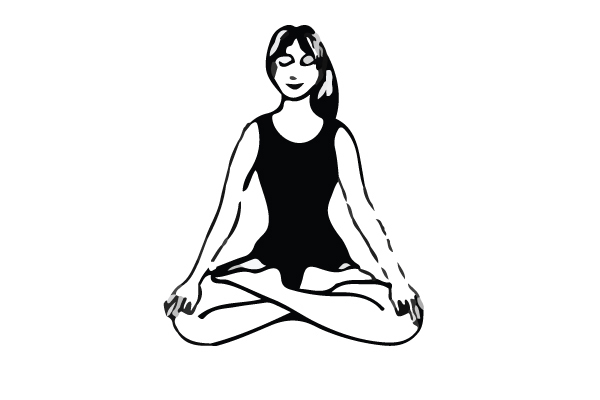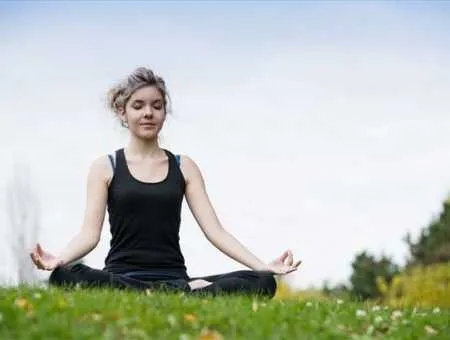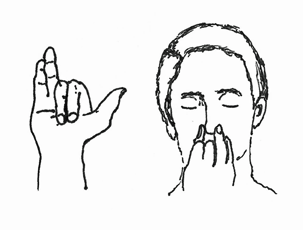Over worked, not getting enough sleep and feeling extreme pressure – do not let these things hamper your life. There are many ways to find peace without having to invest a huge sum at a good spa near you. All you need is ten minutes or less to manage your breathe to remain stress-free.
Controlled breathing is important – to keep your body and mind working at their best, and to promote the feeling of calm, relaxation and lower blood pressure. In all this, it is also important to de-stress you.
By far, the effects of breathing techniques on anxiety and stress have not been determined, not even in controlled clinical conditions. However, many experts suggest and encourage users to practice breathing exercises to increase awareness and mindfulness. It may seem quite easy at the first glance, but it is actually not. It may be difficult to understand and practice for a beginner, but as you begin you achieve perfection and do it more comfortably.
Here are six ways to stay calm and do not let the negativity come your way:
Abdominal Breathing Technique

It is for beginners and allows you to de-stress before exam or an event. When your start, do it with one hand on the chest while the other one on the belly. Take a deep breath in through the nose and make sure that the diaphragm inflates with enough air, not the chest. It should create a stretch in your lungs. You should at least try to practice six to ten deep and slow breaths per ten minutes every day. Doing so will definitely show a reduction in heart rate and blood pressure. Continue for around six to eight week, and benefits may remain even longer.
The best time to practice it is before exams or any other stressful event. There is one rule that you should understand that those work under extremely stressful conditions all the time, find it very hard to control the breath.
- Beginners can also take help of McConnell’s Breathe Strong app, a biofeedback tool
Sama Vritti or “Equal Breathing”

This exercise is also for beginners to bring balance through breathing. When you start, inhale four times and then exhale four times. Do it through the nose to add a natural resistance to the breath. The practitioners can do six to eight counts per breath to calm their nervous system, reduce stress and increase focus.
Anytime is good to practice this breathing exercise – but it is one of the highly specialized techniques that is particularly good before bed. If you face any problem in falling asleep, practice this breathing exercise to take your mind off the unnecessary thoughts or anything that is distracting you.
Kapalabhati or “Skull Shining Breath”

It is an advanced form of breathing exercise that helps to brighten you from inside out.You should begin it with a long, slow inhale, followed by a quick powerful exhale that should come out from the lower belly. Once you get comfortable with the contraction, increase the pace by practicing at least one inhale-exhale every one or two seconds and do a total of ten breaths. Practice it through your nose only.
It is good to practice during the time to wakeup. It can warm up the body and stir the stale energy waking up the brain.
Nadi Shodhana or “Alternate Nostril Breathing”
The level of difficulty for this exercise is intermediate, so you need to fear about it. This breathing practice is said to bring calmness and balance that also unites the right and left side of the brain. Start with a comfortable meditative pose, and hold the right thumb over the right nostril. Inhale deeply through the left nostril. When reach the peak of inhalation, put your ring finger on the left nostril to close it, and then exhale through the right nostril. Continue this pattern – inhaling through right nostril – closing this nostril with the right thumb – exhale through the left nostril – and so on.
You can practice it whenever you feel like – or whenever you need energy. However, always avoid it doing at the bed time. It clears the channels and makes you feel more awake and alert. If you replace your cup of coffee with this, then great.
Guided Visualization
This breathing practice comes between beginners and advanced. When you begin practicing it, keep your head straight for a particular place. Your guide can be a coach, therapist, or a helpful recording – breathe deeply while keeping your focus on positive and pleasant images to replace and negative feeling. Experts also say that it provides a way to achieve mindfulness. This practice can help you reach a place where you imagine yourself to be, while stopping your mind from going to stressful internal dialogues.
You can continue the practice wherever and whenever you feel like – given that you can safely close your eyes there. On course, on a moving wheel is not practically safe.
Progressive Relaxation

This is the best practice for beginners to put off the tension and stress. When you start, keep your eyes closed and focus on tensing and relaxing every muscle group one by one for two to three seconds. Begin with the lower part – feet and toes, and then gradually move up to the knees, thighs, rear, chest, hands, neck, jaw and lastly eyes. Practice this while maintaining deep, slow breath. You may initially find it difficult to stay on the track.
Breathe in and hold for a count of five while the muscles tense, then breath out through the mouth when you relax the muscles.
You can practice it anywhere you like – at home, at desk or even on the road. However, do not let the dizziness come your way. If holding breath feels uncomfortable, keep it for a few seconds only.
Stress, frustration, pressure and anxiety will remain always, but the good thing is that breathing will be there too. So, practice the breathing sessions and keep off the stress and depression.



